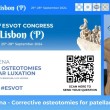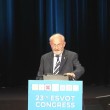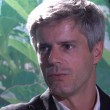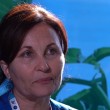
Interview with John Houlton, Dipl. ECVS, Chairman of the World Veterinary Orthopaedic Congress 2010
WVOC/ESVOT 2010 Bologna.
G.S-S.
Three years ago the Board of ESVOT invited you to become the Congress Chairman for the forthcoming meeting in 2010 of the World Veterinary Orthopaedic Congress – in combination with the biannual meeting of ESVOT. You accepted the remit and went about your task which resulted in your recommendation to the Board that Bologna, Italy appeared to be very suitable as a site for the Congress. How did you go about collecting the required information and what decided you to consider Bologna?
The first question, even before where, was when? The calendar for scientific meetings is pretty crowded and I wanted to avoid clashing with well established congresses and conferences. Thus I sent a questionnaire to members of ESVOT and VOS seeking their views on what was the most attractive format for the meeting, when it should be held and where was a good venue. September was considered by an overwhelming majority to be the most appropriate month partly because of previous ESVOT tradition, and because it didn’t conflict with VOS, ACVS, ECVS and the majority of national congresses.
The choice of venue was more difficult with some favouring a sun/sea venue and others more of a cultural experience. Good weather was a universal request! Ease of access from both Europe and the States was important and of course we needed a venue where we could hold our renowned wet-labs. Italy was a popular choice and Florence and Rome were considered too expensive for that time of the year. Venice was discarded for similar reasons. Aldo Vezonni suggested Bologna because it has a marvellous conference centre linked directly to the Guglielmo Marconi International Airport by a convenient Aerobus, making transfer to the Congress Centre easy. Bologna Central Train Station is only 10 minutes from conference centre and access by car is easy from the motorways from Florence, Milan, Ancona or Padua.
The old city of Bologna has some beautiful old buildings and I hoped we could utilise some of these for the social programme. I was also assured of excellent co-operation with the School of Veterinary Medicine of the University of Bologna – the oldest Universityin Europe. This, of course, is essential for the smooth running of the wet-labs.
Finally, I knew that moving from the veterinary school in Munich to a purpose designed Congress Centre would represent a considerable challenge for our Treasurer. Mindful of this, when SCIVAC offered to host their annual congress at the same time and in the same venue, I knew we could share administrative costs as well as the facilities.
G.S-S.
Once you had sufficient material in your hands – what decided you that a visit to Bologna seemed to be necessary and appropriate? In general, before going in to detail, what enthused you about that City in the context of a site for a veterinary meeting? In particular the WVOC which occurs only once every four years and alternates between countries in Europe and North America?
I was hopeful that Bologna’s reputation for culture, great food and good weather would be an attraction not only for delegates but also for their partners. It is also an excellent venue for those who wish to add some holiday time to the congress. However, first and foremost I wanted to be sure that the Congress Centre would provide the mix of rooms and the infrastructure that we required. I was keen that the quality of the scientific programme we had in mind was matched by a first class venue. One of the attractions of alternating the venue every four years between Europe and North America is the opportunity to experience different cultures but moving to new cities is always something of a concern. I’m delighted to say that any fears were soon dispelled as soon as I was given a guided tour along with Aldo Vezzoni
G.S-S.
Having formed the opinion that the city seemed suitable, what were the parameters that you took into account and which finally decided to recommend to the Board that you had found the right place?
The facilities of the conference centre and the professionalism of its staff were perhaps the most important aspect. Delegates deserve good quality facilities with ‘IT’ and audiovisual systems that are reliable, an environment that is comfortable and food that is both appealing and which can be eaten in comfort.
We needed a variety of rooms of different sizes, ranging from a large auditorium to stage the ‘State of Art’ lectures to a number of small rooms for small seminars that would run parallel to the main programme.
The Congress Centre had to be easily accessible by road, rail and air with hotel accommodation that was within reasonable walking distance. For those who want to stay in the city centre, the journey is a 10 minute car/taxi/bus ride.
G.S-S.
Did you the select a new Congress Organising Office or did you consider ‘importing’ the one that had organised a previous WVO
Congress in Munich?
We have had a very good relationship with CSM in Munich who have looked after issues such as travel arrangements, hotels, registration of delegates, etc. and we considered their continued use. However, ESVOT has outgrown the Veterinary School facilities at Munich and this, together with Prof Matis’ retirement next year, has necessitated a move for future ESVOT Congresses and wet-labs beyond 2010. It therefore seemed like a good opportunity to seek another Congress Organising Office and as I said earlier, SCIVAC have a very good track record of organising Congresses. Through their good offices and Aldo Vezzoni’s close association with SCIVAC, we have invited E.M.O.V.A (European Management Office for Veterinary Associations), a division of the Italian Society EV - Veterinary Events - to act as the Congress Organising Office. EMOVA is a organisation that has specialised in organizing events, conferences, public relations and publications in the field of veterinary medicine over the last 25 years. Its headquarters are located in Cremona, halfway between Milan and Bologna. It is therefore easily accessible and its staff has a wide experience of organising congresses such as ours.
G.S-S.
I understand that the Organising Committee has met and produced a draft of their ideas with reference to the themes of the various sessions to be entertained and the suggested selection of the speakers for same. Can you give an overall account of those themes and the tentative list of speakers? How many separate sessions do you believe will run concurrently?
Geoff, this really is a tough question! To do it justice I suggest you look at the provisional programme that is on the website. In summary, there are small and large animal wet-labs at the Veterinary School all day Wednesday, concurrent seminars and dry labs at the Congress Centre including an in depth seminar on osteoarthritis, and more dry labs at the Centre on the Thursday morning . Also on Thursday morning there are seminars on small animal arthroscopy, new strategies in pain control and an IEWG workshop. And all this before the Congress starts proper on Thursday afternoon!
Between Thursday and Saturday afternoons, we have in excess of 40 sessions planned, comprising a mix of themed subjects ranging from bovine orthopaedics to tools to measure clinical success. Essentially, there are two small animal streams, an equine stream and a bovine stream all supported by in depth seminars, free communications and hot topics. But as I say, why not check out the details on the website.
G.S-S.
Has it been decided that the previous programmes of ‘State of the Art Lectures’ by Guest Speakers shall be continued and if so, is there an auditorium of sufficient size to seat all of the registrants at the same time?
We most certainly have decided to continue with the ‘State of the Art’ lectures. As you will remember, it has been necessary in the past to have a video-link between two theatres to accommodate all the registrants. I’m pleased to tell you that this will no longer be necessary. The Congress centre has an auditorium that will seat 1300 delegates in comfort. This will be used for the SCIVAC delegates for the majority of the time but one of the advantages of holding the two congresses simultaneously is that we will have access to this fantastic auditorium for the WVOC ‘State of the Art’ lectures.
G.S-S.
Is the Social Programme to follow the role as heretofore, or do the Italians intend to ’alter the flavour’?
Yes and no!
We want delegates to have the opportunity to savour the cuisine of the Emilia-Romagna region since it is some of the best in Italy. Handmade egg pasta and stuffed pastas, especially tortellini, are specialties of Bologna, and there is, of course, the famous spaghetti alla Bolognese. So we have given delegates the opportunity on the Friday evening to explore the old city of Bologna with its beautiful old buildings, its covered walkways and its wide variety of restaurants.
The social programme will commence with the Welcome Reception on Thursday 16th in the fine old buildings of the University of Bologna’s School of Veterinary Medicine located in the city centre and conclude with the traditional Congress banquet on the Saturday at the Palazzo de’ Rossi.
Additionally, after the State of the Art lecture on Friday afternoon, wine and cheese will be provided at the poster session when poster holders will be available to answer questions.
G.S-S.
Is there to be an organised programme for non-veterinary partners and if so has a draft for it already been proposed and thought out in skeleton form?
We considered an organised programme for non-veterinary partners but decided that most people would like to explore the town at their leisure. We know that many non-veterinary partners like to renew old friendships and go shopping, sight-seeing or have a coffee or lunch together and are confident that ‘new’ non-veterinary partners will be welcomed into this extended family.















